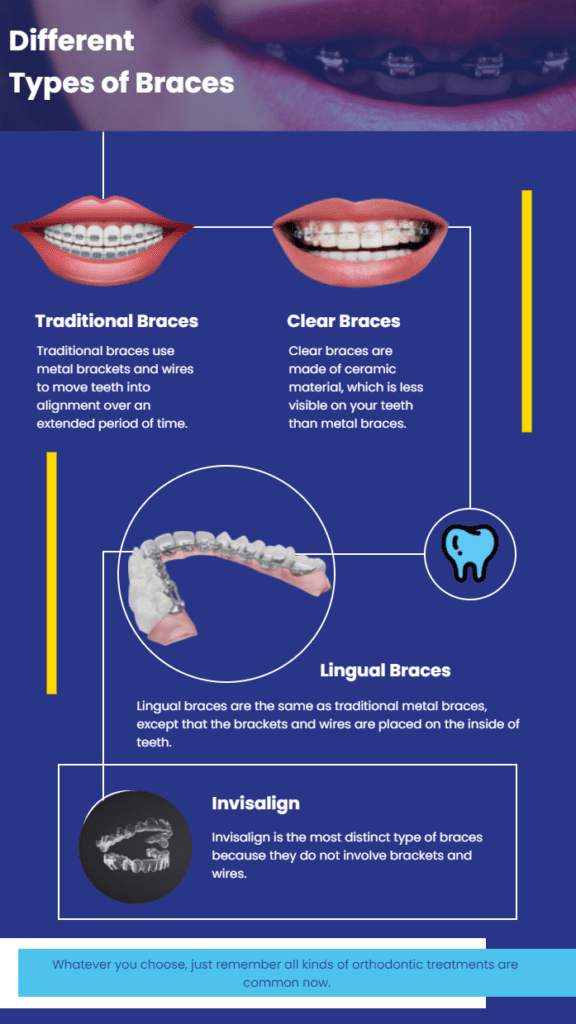Comprehensive Overview to Orthodontics Procedures for Fixing Oral Misalignments
In the world of orthodontics, the journey to achieving a perfectly straightened smile entails a myriad of procedures tailored to deal with oral imbalances. From traditional dental braces to invisible aligners and also medical alternatives, the area of orthodontics uses a series of options to address varying degrees of dental abnormalities. Comprehending the ins and outs of each treatment, including their systems, advantages, and possible disadvantages, is important in making educated choices concerning one's orthodontic treatment. As we browse through the extensive guide to orthodontic procedures for correcting dental misalignments, the complex information of each technique will certainly unravel, clarifying the course toward a harmonious and practical oral alignment.
Orthodontic Procedures Overview

Routine adjustments and monitoring are essential parts of orthodontic therapy to make certain progress is on track and to make any type of needed adjustments along the means. By undergoing orthodontic treatments, people can not just accomplish a straighter smile yet additionally improve their overall dental health and feature.
Traditional Braces: Exactly How They Work
When thinking about orthodontic therapies for dental imbalances, traditional braces stand out as a tried and true approach for remedying teeth positioning. Typical braces are composed of brackets, cables, and bands that work together to use continual pressure on the teeth, slowly relocating them into the preferred placement.
As stress is used to the teeth with the braces, the bone surrounding the teeth is reshaped to support the brand-new tooth settings. People will certainly require routine modifications at the orthodontist's office to guarantee the braces proceed to apply the correct stress for reliable teeth activity.
Unnoticeable Aligners: Pros and Cons
These clear, customized trays are practically unseen when put on, making them an attractive choice for people seeking a more aesthetically pleasing orthodontic therapy. People can remove the aligners before eating or cleaning their teeth, decreasing the risk of food getting stuck in the appliance and streamlining the cleansing process.

Surgical Orthodontic Options
Surgical treatments in orthodontics existing viable choices for resolving complex oral imbalances that may not be effectively solved via conventional orthodontic therapies. While unnoticeable aligners and typical dental braces can deal with several orthodontic issues, particular situations call for surgical treatment to accomplish optimal outcomes. Surgical orthodontic alternatives are typically recommended for extreme malocclusions, significant jaw disparities, and situations where the underlying bone framework requires modification to attain appropriate alignment.
One usual surgical orthodontic procedure is orthognathic surgical procedure, which includes repositioning the jaws to deal with useful problems such as problem eating or talking. This surgery is commonly carried out in collaboration with an orthodontist who aids align the teeth before and after the procedure. Surgical orthodontics might likewise entail procedures to reveal affected teeth, get rid of excess gum tissue, or reshape the jawbone to produce a much more harmonious facial account.
Before taking into consideration surgical orthodontic alternatives, individuals undertake a thorough assessment to determine the necessity and potential advantages of such treatments. invisalign. While surgical treatment might appear overwhelming, it can substantially enhance both the function and aesthetic appeals of the smile in cases where traditional orthodontic therapies fall short
Retainers and Post-Treatment Care

Post-treatment treatment involves adhering to the orthodontist's directions faithfully. This might include appropriate oral hygiene techniques, going to follow-up appointments, and using the retainers as recommended. Failing to adhere to post-treatment treatment guidelines can lead to regression, imp source where the teeth progressively move back in the direction of their initial placements. Regular retainer wear, great dental health, and routine dental examinations are vital for preserving the outcomes accomplished with orthodontic surgical treatment and making sure the lasting stability of the fixed oral positioning.
Final Thought
Finally, orthodontic treatments provide various options for remedying oral misalignments. Standard dental braces utilize steel brackets and wires to move teeth into proper placement. Unseen aligners supply an even more discreet option but may not be ideal for all situations. Surgical orthodontic options are available for extra severe misalignments. Retainers are frequently used post-treatment to keep the new positioning. On the whole, orthodontic procedures can properly enhance dental wellness and visual look.
As we navigate with the thorough overview to orthodontic treatments for correcting oral misalignments, the elaborate information of each approach will certainly unravel, shedding light on the course toward a practical and harmonious oral placement. - orthodontics
One of the most usual orthodontic treatments is the use of braces, which are composed of steel brackets and cables that apply gentle pressure to progressively move teeth right into the preferred setting.When considering orthodontic therapies for dental imbalances, traditional braces stand out as read a time-tested method for remedying teeth placing. Furthermore, undetectable aligners might not be appropriate for intricate orthodontic concerns that call for more considerable teeth activity, as they are generally recommended for light to modest cases. Retainers are tailor-made orthodontic gadgets made to hold teeth in their dealt with settings after the completion of orthodontic treatment.
Comments on “Locating the Right Cumming Orthodontist for Your Braces and Aligners Requirements”